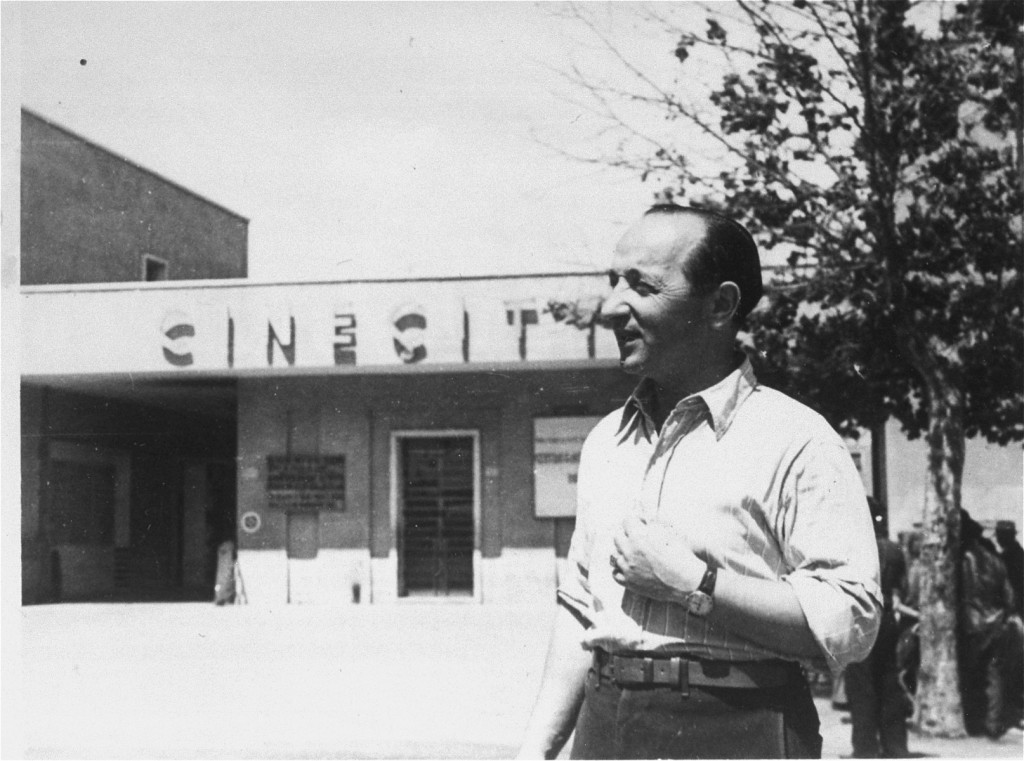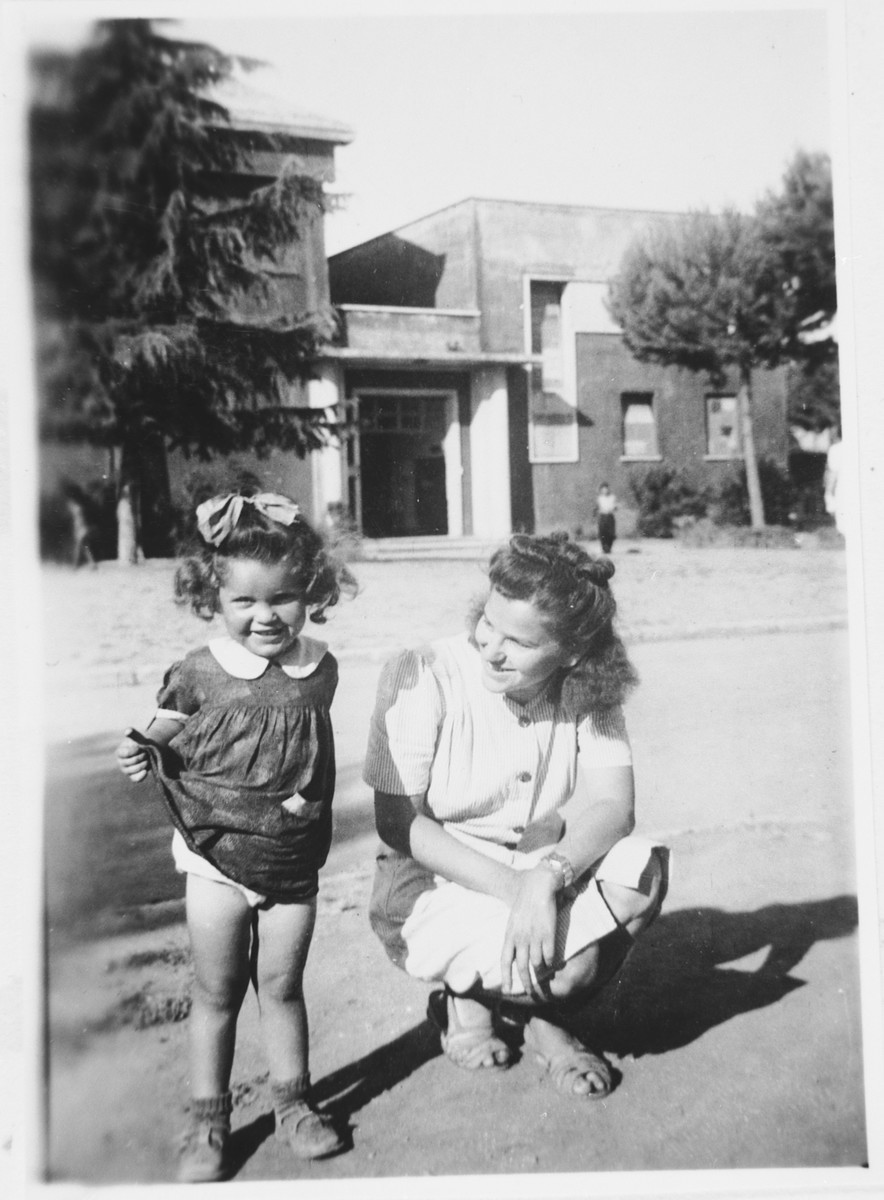
Cinecittà Displaced Persons Camp
For the Jews who survived the Holocaust, the end of World War II brought new challenges. Many could not or would not return to their former homelands, and options for legal immigration were limited. In spite of these difficulties, these Jewish survivors sought to rebuild their shattered lives by creating flourishing communities in displaced persons camps in Germany, Austria, and Italy. In an unparalleled six-year period between 1945 and 1951, European Jewish life was reborn in camps such as Cinecittà.
Background
Situated in Rome, Cinecittà served as the administrative capital for displaced persons (DPs) in Italy, and as a DP camp that housed 680 Jewish refugees in 1947. The camp was founded by the Allied Commission in 1945, and a synagogue and nursery were established on the premises. During that year, the camp reached a capacity of 1,800 Jewish and non-Jewish DPs.
The executive staff of the Joint (The American Jewish Joint Distribution Committee) in Italy met at the camp. The Central Committee of Liberated Jews in Italy (also called the Merkaz ha-Plitim) also convened there and published the chief Jewish DP newspaper of Italy, Baderekh (On the Way). Most issues of the Italian DP press were printed by various political groups in Cinecittà, including the Farn Folk of the former partisans, Undzer Vort of the Poalei Zion Hitachdut (Association of Zionist Workers), Al Chofim of the Histadrut yechud ha-Tsionim ha-Kelaliyim be-Italiyah (Organization of Unified General Zionists in Italy), and the Natsyonaler Informatsye Byuletin by the Italian chapter of Beit Trumpeldor.

Cinecittà was also a gathering center for many of the approximately 2,550 Jewish DPs (nearly one of every five Jewish refugees in Italy, according to the Italian Central Committee in 1946) who did not live in United Nations-recognized DP camps or refugee agricultural centers.
“Cinema City”
“Cinecittà” means, literally, “cinema city.” One of Europe’s largest movie studios, it was converted to establish the Cinecittà DP camp. The studio itself was originally founded by Benito Mussolini in 1937 under the motto, “Cinema is the most powerful weapon.”
The complex, which was partially destroyed from Allied bombing during World War II, became a refuge for people of thirty nationalities, including Poles, Russians, Iranians, Chinese, Roma, and Jews, who had survived Nazi killing centers. Refugees were housed in the studios, surrounded by movie sets, backdrops, and props. The film “Quo Vadis?” was produced in the camp area in 1949; it is likely that DPs served as extras in the film.
Mordehai Greenberg, who was 12 at the time, recalls life in the refugee camp near Rome:
“We arrived in Rome, and were taken straight to Cinecittà. . . This was the city of movies. The entire right side belonged to refugees from Naples, from all sorts of places, from the shellings. The left side was for the more distinguished crowd, all with different nationalities, foreigners who had been thrown into the war. I had friends there from Yugoslavia, France, from many different places. We also studied there. Once, we performed in some Hanukah party that the scouts in Rome organized…We had a room, others lived in a recording studio, so they just put up dividing walls made out of cardboard… One day they took us to the Brigade's show in Rome. [Yossi] Yadin and Hannah Meron were there. . . 60-70 of us went there by truck. We hardly held onto the ladders. We traveled standing up.”
In 2013, a film entitled “The DP Camp of Cinecittà,” premiered. It was directed by Marco Bertozzi, with research undertaken by Noa Steimatsky of the University of Chicago.
Critical Thinking Questions
- What challenges did survivors face in the DP camps?
- What challenges did the Allies face in establishing and supervising DP camps?
- What responsibilities do (or should) other nations have regarding refugees from war and genocide?

